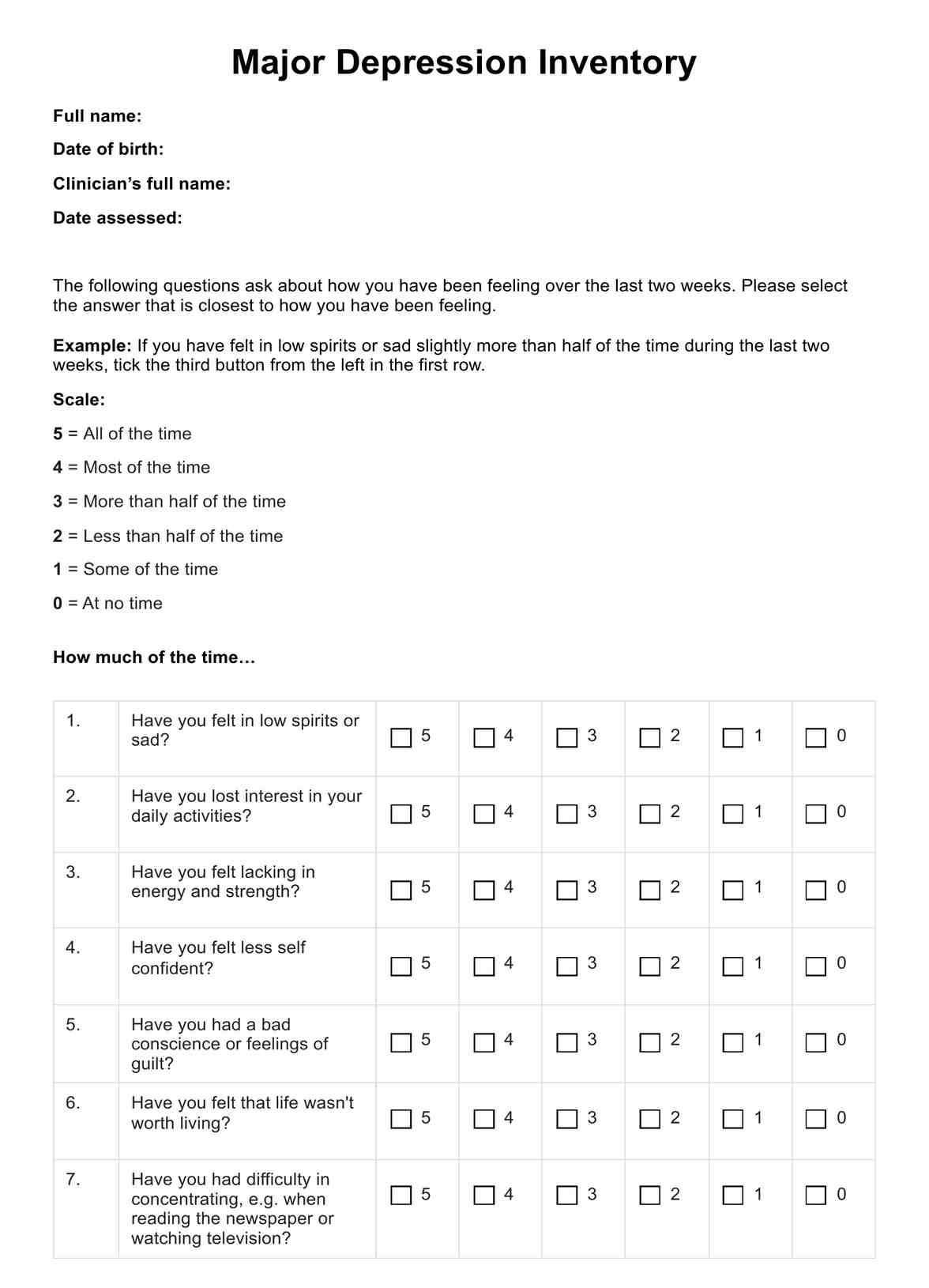It can be accomplished within five minutes.

Major Depression Inventory
Use the Major Depression Inventory to gauge your patient’s symptoms of depression! Learn more about it through this guide.
Use Template
Major Depression Inventory Template
Commonly asked questions
There shouldn’t be any difficulty since the person using it simply needs to choose from a set of answers.
Because depression is a complex mental health condition, a single assessment may not be enough to properly assess a person, so it’s best to use other assessments to cover more ground.
EHR and practice management software
Get started for free
*No credit card required
Free
$0/usd
Unlimited clients
Telehealth
1GB of storage
Client portal text
Automated billing and online payments











